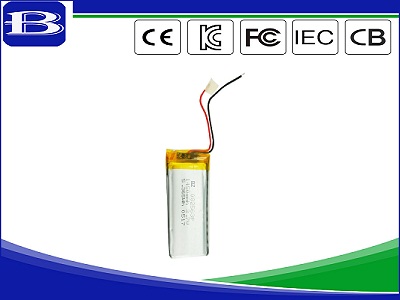1. Handling of Cells
1.1 Consideration of strength of film package
1). Soft Aluminium foil
Easily damaged by sharp edge parts such as pins and needles, Ni-tabs, comparing with metal-can-cased Li-ion battery.
2).Sealed edge may be damaged by heat above 100°C, bend or fold sealed edge.

1.2 Prohibition short circuit
Never make short circuit cell. It generates very high current which causes heating of the cells and may cause electrolyte leakage, gassing or explosion that are very dangerous.
The LIP tabs may be easily short-circuited by putting them on conductive surface.
Such outer short circuit may lead to heat generation and damage of the cell.
An appropriate circuitry with PCM shall be employed to protect accidental short circuit of the battery pack.
1.3.Mechanical shock
LIP cells have less mechanical endurance than metal-can-cased LIB.
Falling, hitting, bending, etc. may cause degradation of LIP characteristics.
1.4 Handling of tabs
The battery tabs are not so stubborn especially for aluminum tab.
Don’t bend tab.
Do not bend tabs unnecessarily.
2.Notice for Designing Battery Pack
2.1 Pack toughness
Li-ion Battery pack should have sufficient strength and the LIP cell inside should be protected from mechanical shocks.
2.2 Cell fixing
The LIP cell should be fixed to the battery pack by its large surface area.
No cell movement in the battery pack should be allowed.
2.3 Inside design
No sharp edge components should be insides the pack containing the LIP cell.
2.4 Tab connection
Ultrasonic welding or spot welding is recommended for LIP tab connection method.
Battery pack should be designed that shear force are not applied to the LIP tabs.
If apply manual solder method to connect tab with PCM, below notice is very important to ensure battery performance:
The solder iron should be temperature controlled and ESD safe;
Soldering temperature should not exceed 350°C;
Soldering time should not be longer than 3s;
Soldering times should not exceed 5 times, Keep battery tab cold down before next time soldering;
Directly heat cell body is strictly prohibited, Battery may be damaged by heat above approx. 100°C
2.5 For mishaps
Battery pack should be designed not to generate heat even when leakage occurs due to mishaps.
1) Isolate PCM (Protection Circuit Module) from leaked electrolyte as perfectly as possible.
2) Avoid narrow spacing between bare circuit patterns with different voltage.
(Including around connector)
3) LIP battery should not have liquid from electrolyte, but in case If leaked electrolyte touch bare circuit patterns, higher potential terminal material may dissolve and precipitate at the lower potential terminal, and may cause short circuit. The design of the PCM must have this covered.



